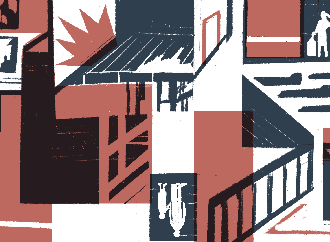Section Houses and for Whom to (Re)Build Them? of the annual conference Feuerbach 11 covered the housing policy issues in Ukraine and the EU. In recent years, this area of social policy in Ukraine has not been effective, but after the full-scale invasion of Russia, it ended up in crisis. In Western countries, where the housing policy is more socially oriented, Ukrainian refugees also often face problems with access to housing. Invited experts and activists looked over the questions of how to meet the housing needs of IDPs, why today’s housing programs do not work well, and what kind of requirements for government entities can change the housing policy.
The section was moderated by Alyona Liasheva, sociologist and co-editor of Commons.
The Right to Housing in Ukraine: What Was (Not) Changed?
Anastasia Bobrova, analyst, manager of Cedos, and editor of Mistosite.
The housing crisis in wartime
Ukraine is now experiencing its greatest housing crisis ever. According to the World Bank, 817,000 residential buildings were damaged or destroyed, of which 38% beyond repair. “However, any statistics becomes outdated the following day, as shelling of Ukrainian cities goes on,” the researcher underlined.
Losses in the housing sector make up 40% of all material losses. About 69 billion dollars are needed for reconstruction, which is 20% of all necessary funds.
But housing is not just about buildings; first, it is about the residents. The International Organization for Migration estimates that 6.2 million persons have become internally displaced. For these people, the issue of housing is especially critical today.
About 19% of displaced persons need help with housing. Most of them rent housing unassisted, and about 4% still live in collective centers: restructured kindergartens, schools, or gyms.
Of course, housing is directly related to wages. According to the IOM, 29% of displaced persons must move into flats with worse living conditions to save money.
What does the state offer?
There are several strategies for reacting to the crisis at the local level. In the first months of the war, the main strategy of the authorities was to redevelop residential and non-residential communal property: schools, dormitories, hotels, and sanatoriums. Apart from that, modular towns are being established in Ukraine. For instance, three of them are in Lviv, and about a thousand people can live there. Furthermore, the State Fund for the Promotion of Youth Housing Construction purchased a number of apartments for IDPs. There is also the program called Prykhystok [Shelter – tr. note] that encourages people to host IDPs and pays owners about 12 euros per month per person. Thus, there are response measures, but they are certainly not systemized.
What about the housing policy before the war?
After the collapse of the Soviet Union, mass free privatization of housing took place in Ukraine. Housing policy was aimed at expanding the system of private property. Various programs supported the construction or purchase of new housing through preferential loans and different mortgage proposals. It resulted in the underdevelopment of alternative variants to guarantee the right to housing (social, cooperative, or rental).
Housing policy in Ukraine has been quite disorganized. Apart from the Ministry of Communities and Territories Development, the Ministry for Reintegration of the Temporarily Occupied Territories deals with housing for IDPs, and the Ministry of Social Policy deals with housing for homeless people. At the same time, housing rent in Ukraine has been unregulated, and tenants’ rights are under-protected.
Unfortunately, no systemic solutions have appeared in Ukraine to provide housing for IDPs since 2014. Then, they introduced modular houses as a temporary solution in seven Ukrainian cities. However, many people lived there up until 2022. Those houses are not designed for such long periods of living and are not integrated into the city’s infrastructure. People often feel excluded there. According to Anastasia Bobrova, while making emergency “temporary” decisions, authorities must take into account this unfortunate experience.
Why does Ukraine need social housing?
The Law on Social Housing in Ukraine was adopted in 2006. However, this type of housing did not develop much. According to the Ministry of Communities and Territories Development, as of January 2021, there were 1,098 social housing apartments in Ukraine, in which 1,564 people lived, including 175 IDPs. There are 149 such apartments in the Poltava region and only 72 in Kyiv.
There is also temporary housing in Ukraine, performing almost the same functions as social housing. It was planned as a solution for people unable to repay their mortgage loans. Since 2014, it has been used for the needs of IDPs.
In 2017, a subvention from the state budget was created to help communities develop temporary housing. Even though there was a financial instrument for development, it did not help. As of January 2021, there were only 1,997 apartments in Ukraine, in which 3,363 people lived, including 1,840 IDPs. The largest number of temporary housing units – 597 – was in the Donetsk region.
A full-scale war demonstrated the need to develop social housing in Ukraine.
“Now, not only activists pay attention to this issue, but also government officials. The draft reconstruction plan clearly states that Ukraine should develop social housing. It should be one of the key points of reviewing the housing policy,” the speaker summed up.
According to Bobrova, there may be several central suggestions:
1. Combine social and temporary housing funds and create a single social housing fund in public ownership.
2. Combine separate lists of citizens who need to improve living conditions into one register.
3. Improve the system of social housing management at the local level.
4. Adopt the state program for social housing development and increase state support for communities.
Housing for Refugees in the EU: German Experience
Halyna Suhomud, New Housing Policy housing researcher.
German refugee accommodation system
Germany has welcomed more than a million Ukrainian refugees, getting second place after Poland. Most of them reside in the western and southern regions: North Rhine-Westphalia – 211 thousand, Bavaria – 153 thousand, Baden-Württemberg – 125 thousand.
Ukrainian refugees in Germany can receive a special temporary protection status. Although the system still has flaws, Ukrainians obtain slightly better conditions than other asylum seekers. Temporary protection does not involve obligations to stay in one place, attaching a person to a specific city only in case of receiving a social benefit. This status also implies integration into the German social system. Other asylum seekers from so-called safe countries of origin must stay in arrival centers (dormitories) until the application is processed. Only in the case of a positive result do they receive social benefits and the right to move. Therefore, those with temporary protected status have the same opportunities as all low-income people in Germany.
If a person is financially independent, they have the right to any housing within the country. If a person receives financial aid from Employment Center, the housing opportunity is restricted to a city or region. There are four types of accommodation for refugees receiving social benefits:
- social municipal apartments designed for refugees;
- social apartments of municipal companies;
- private apartments with a social function for a certain period of time;
- private apartments, which correspond to the standards of the Employment Center in terms of price and square meters.
Housing and (migration) policy
Municipal social housing policy does not include asylum seekers or refugees as a target group. However, these policies are interconnected.
“For example, in Berlin, at the very beginning of March, they decided to accept only certain groups of people, namely those who can prove to secure housing for six months,” Halyna Sukhomud said.
Those without a place to live should return to arrival and co-location centers.
Solidarity housing is of great importance, meaning the one provided by relatives, friends, public organizations, self-organized groups, or private individuals.
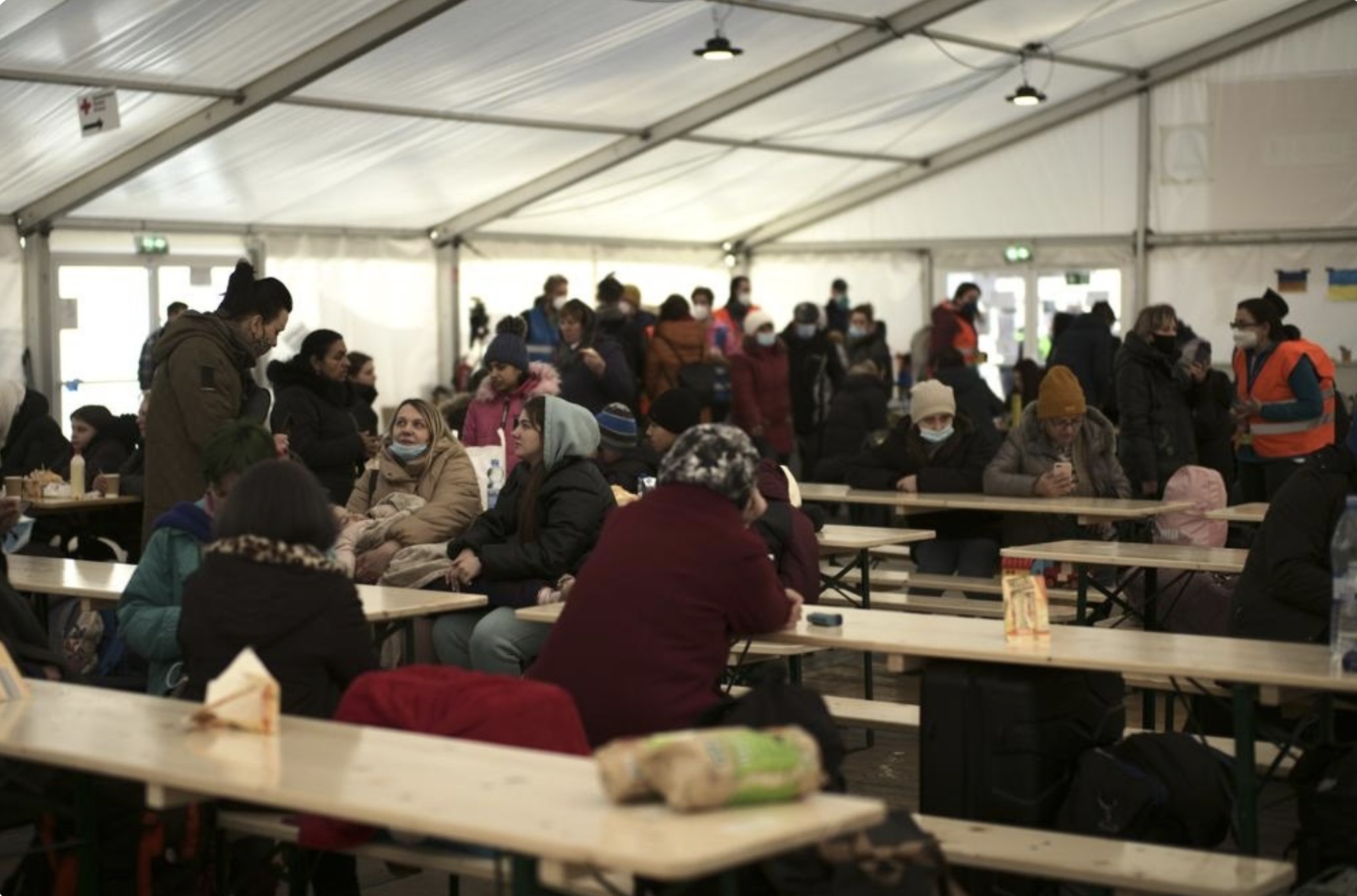
Ukrainian refugees in Germany / Photo: AR
Challenges
In Germany, there is a qualitative difference between regions, as well as the difference between settlement types. Due to overpopulation, housing availability depends on whether it is a big or small city. Refugees depend on volunteer help, civil society, and solidarity housing.
Refugees’ access to housing reflects social inequalities. The situation varies depending on gender, class, level of education, language skills, local contacts, evidence of Ukrainian citizenship, and time of entry into the country.
Finally, due to the general crisis of affordable housing in Germany, it is hard to find a permanent place of residence.
Housing for IDPs: Given the Government’s Inactivity, What Can the Community Do?
Olesya Datsko, Doctor of Economics, associate professor, deputy head of the NGO Center for Social Innovations, Lviv.
Housing for IDPs: where to get it?
Using Lviv as an example, Olesya Datsko explained that a city has much unused housing potential. And since the State Register of Real Property Rights is currently closed, it is impossible to check owners and their rights for ownership.
“According to the law, the owners must allocate their unoccupied premises to the needs of IDPs, receiving a respective compensation. It’s much easier and cheaper than building a new house,” Datsko emphasized.
According to her, in other countries, there are regulations obliging the owners to rent out housing if they do not use it. If they disagree, the authorities can do it themselves, compensating the amount stipulated by law. “Is it possible to adopt such a scheme in Ukraine? Of course,” said Olesya.
Problems of Ukrainian housing policy
Apart from the corruption and mistrust of the authorities, Olesya Datsko considers the lack of housing inventory to be one of the major obstacles, “Paradoxically, but there are practically no indications of housing in the system of national wealth accounting. According to the current legislation, all district administrations of Lviv should account for all residential premises because we are talking about taxes. But they are not listed at all. Accordingly, there is a large amount of empty housing, the owner of which does not pay taxes and feels no obligations,” the researcher emphasized.
A new register of property rights was introduced in Ukraine in 2015. However, the lists from the old registers were transferred there only partially. “That is, we don’t know how much housing there is in Lviv,” Olesya Datsko explained.
At the same time, Ukraine’s housing policy was aimed at supporting developers. “In other words, our middlemen made money from construction, which was not focused on the citizens’ needs. The beneficiaries of this policy were not the people. And this is a big problem,” said Datsko.
What can the community do, and what can the government do?
The speaker listed some recommendations that may influence housing policy at the community level:
1. Join public organizations and charitable foundations to solve housing problems together.
2. Make a request to the city, village councils, or regional military administration regarding the identification of real estate objects and their removal for public needs.
3. Find resources for repair and improvement using the instruments of fundraising and crowdsourcing.
And also, some proposals to the authorities:
1. Create housing and construction cooperatives and charitable funds.
2. Form programs for the small towns’ development, considering potential vectors of the economy.
3. Involve volunteers and public figures in the inventory of premises suitable for housing.
4. Develop a mechanism for providing information about unoccupied premises.
5. Force acquisition of unused apartments for the needs of IDPs.
6. Make registers of property rights open.
The unavailability of quality and comfortable housing will remain an urgent problem for Ukrainian refugees, but also for those who stayed home. Activists and experts highlight that an essential step in providing housing for IDPs and vulnerable population groups is a social housing development. We should resolve this issue at all levels: from community self-organization to national programs. Today, the housing problems are visible at the national level thanks to the work of activists.
Houses and for Whom to (Re)Build Them?
Recording of the discussion with English simultaneous interpretation:
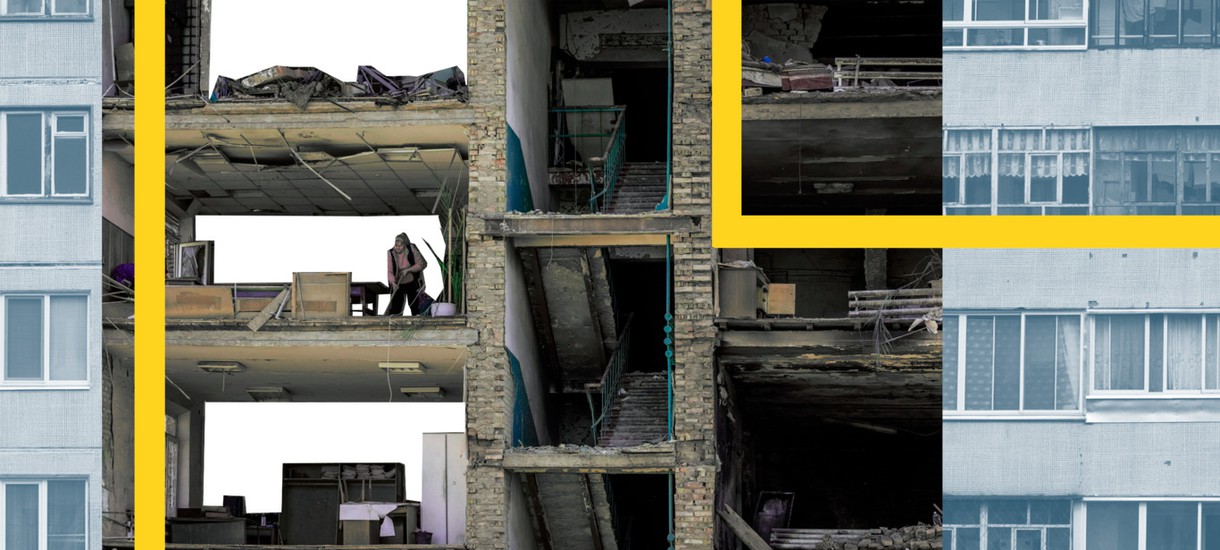

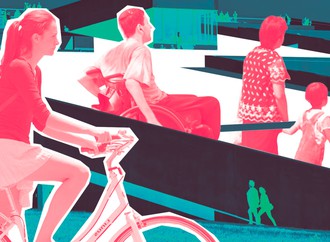




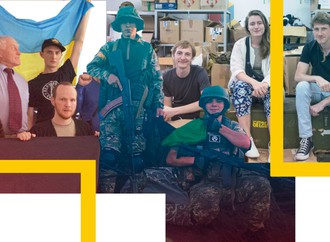
![Reconstruction and Justice in Post-War Ukraine [video]](/file/thumbnail/%D0%BA%D0%BE%D0%BD%D1%84_category.png)
